‘The Embrace’ is Much More Than Public Art, Says Faculty, Alum
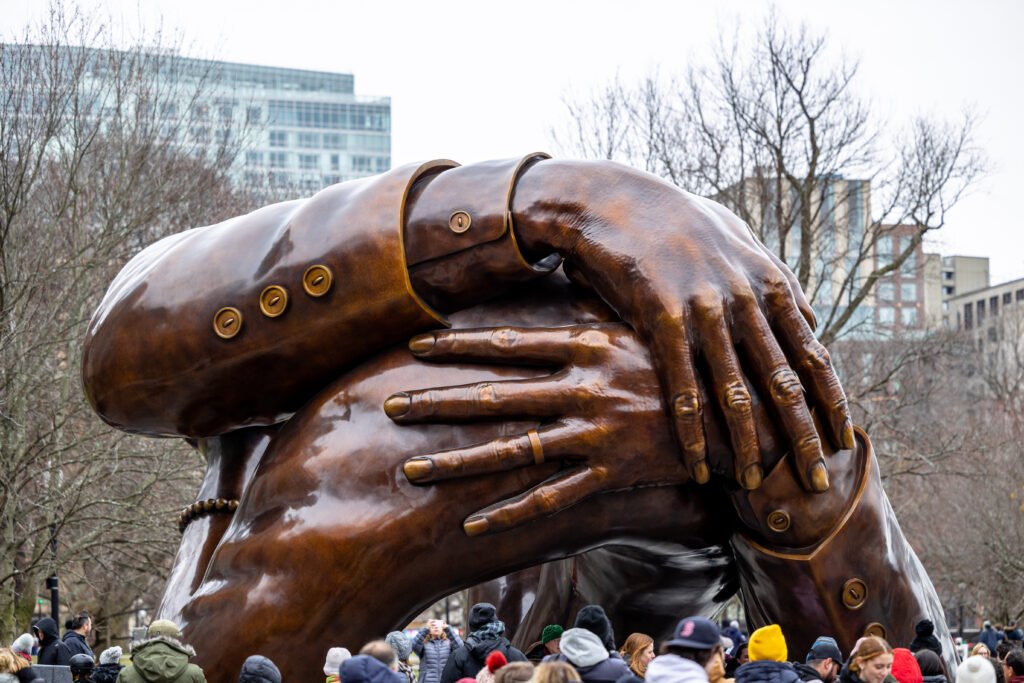
The unveiling on Boston Common of “The Embrace,” a public art piece depicting a hug shared between Dr. Martin Luther King Jr. and Coretta Scott King after he won the 1964 Nobel Peace Prize, was not solely the culmination of the project, but the beginning of important societal discussions.
“It’s about creating community and spurring dialogues,” said Cher Knight, professor of art history in the Department of Visual and Media Arts and a Public Art Scholar on the Art Committee for the MLK Jr. and Coretta Scott King Memorial. “For me, it’s about getting [the Embrace Center] we’re going to have, which is important.”
The Embrace Center will be built in Roxbury, and will provide the platform to continue to do the work to combat systemic racism and make Boston a fair, equitable, inclusive city where people want to live and work together through programming and resources, said Knight.
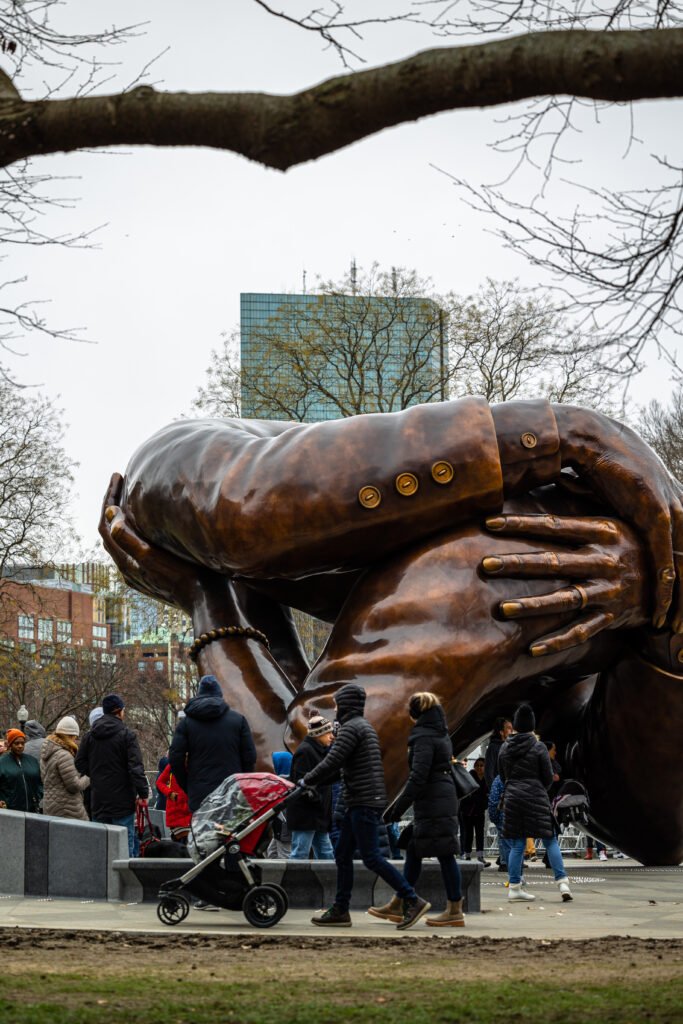
The Purpose of Public Art
As the Public Art Scholar on the Art Committee for the MLK Jr. and Coretta Scott King Memorial, Knight had a role in the creation of the project before it was even a project. Being a public art expert, she was brought onto the committee by the city’s Arts and Culture office.
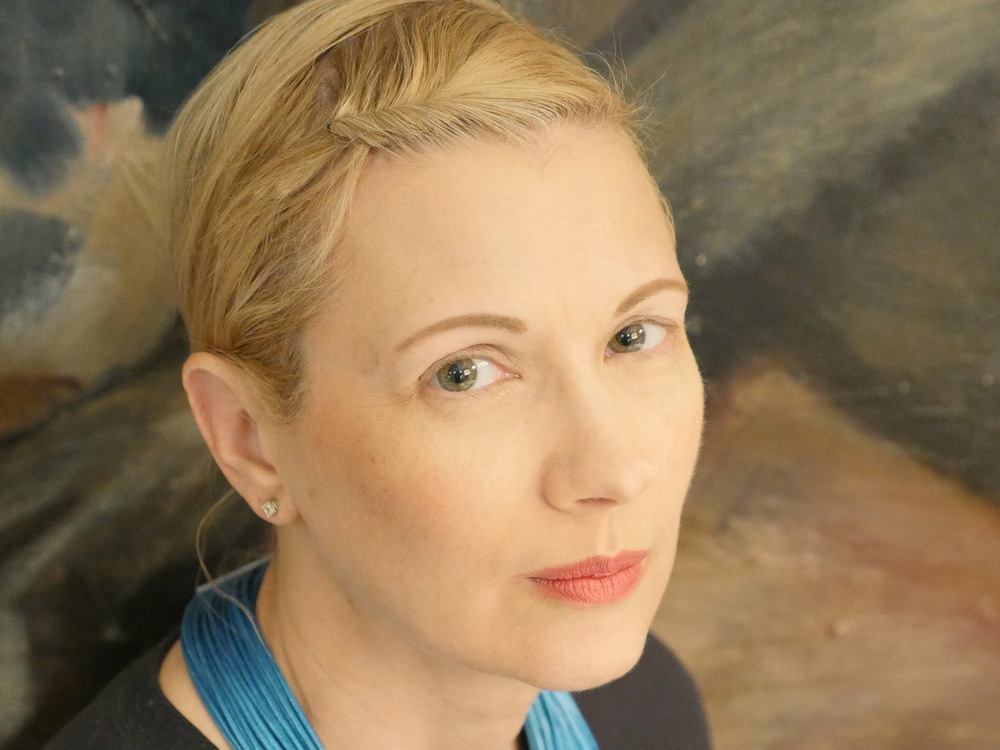
“How is a memorial different from a monument? How can we make works to engage the public in practice? What are the best practices for audience engagement and getting info from the public?” said Knight. Those are some of the questions that Knight spoke to and about with those involved in creating “The Embrace”.
The committee created public surveys and visited numerous neighborhoods across Boston for their input of what they’d like the project to look like on Boston Common. Knight said they spent a year going to neighborhoods to lead town halls, during which participants issued their concerns and hopes for the project. Knight provided info and context of public art history, shared the work in jurying proposals, attended public meetings, wrote materials, and more.
Eventually around 130 proposals were submitted after a call for artist proposals. The committee whittled that down to five finalists. That semifinalist quintet visited Boston, presented to the commission, and artist Hank Willis Thomas’ design was chosen.
“A lot of it was boots on the ground work. You can’t do public art sitting in your office,” said Knight. “You have to go to all types of events, meet people, spend time with them. You can’t helicopter in. You have to have a rootedness within the community. You have to earn people’s trust, and you have to be sincere.”
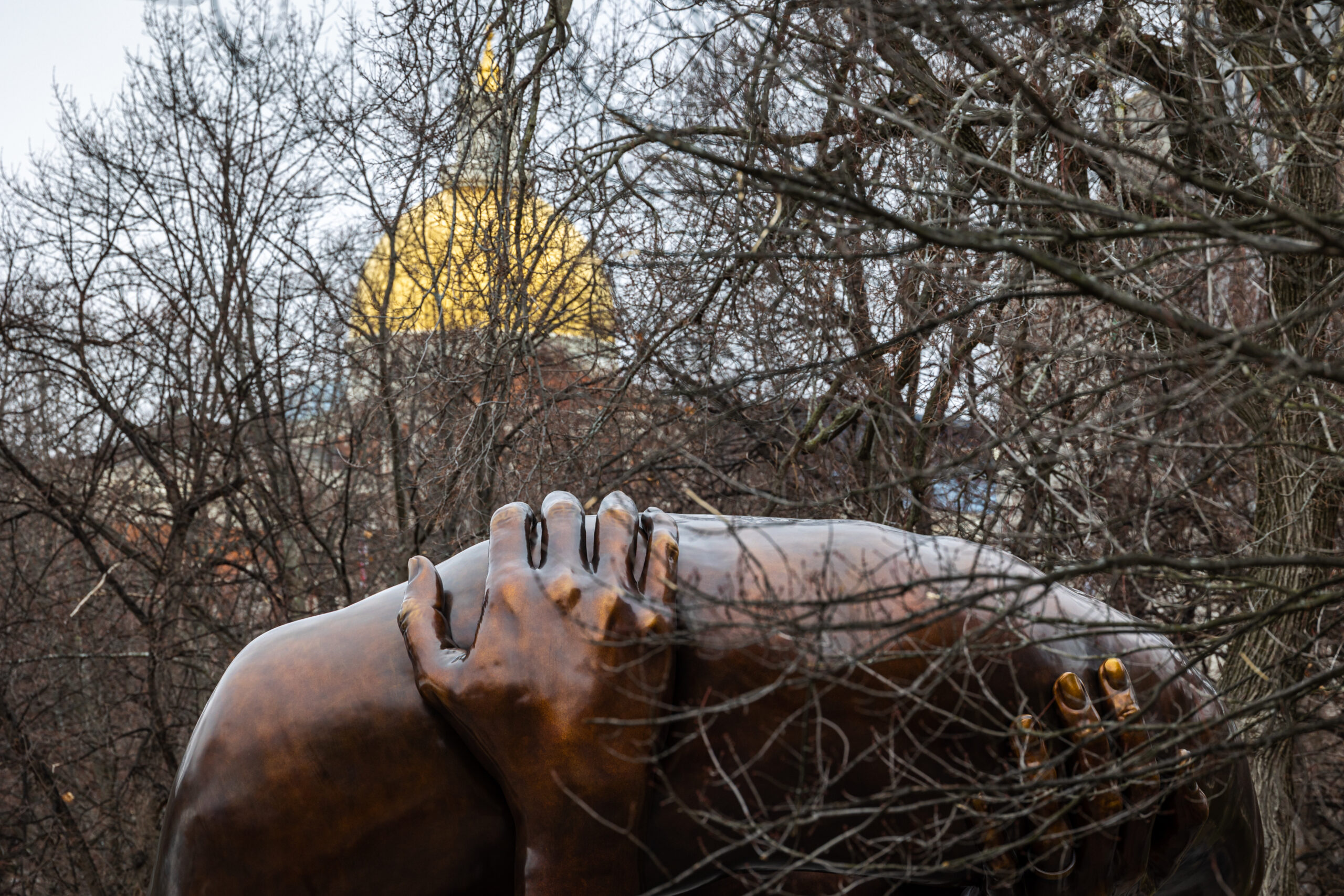
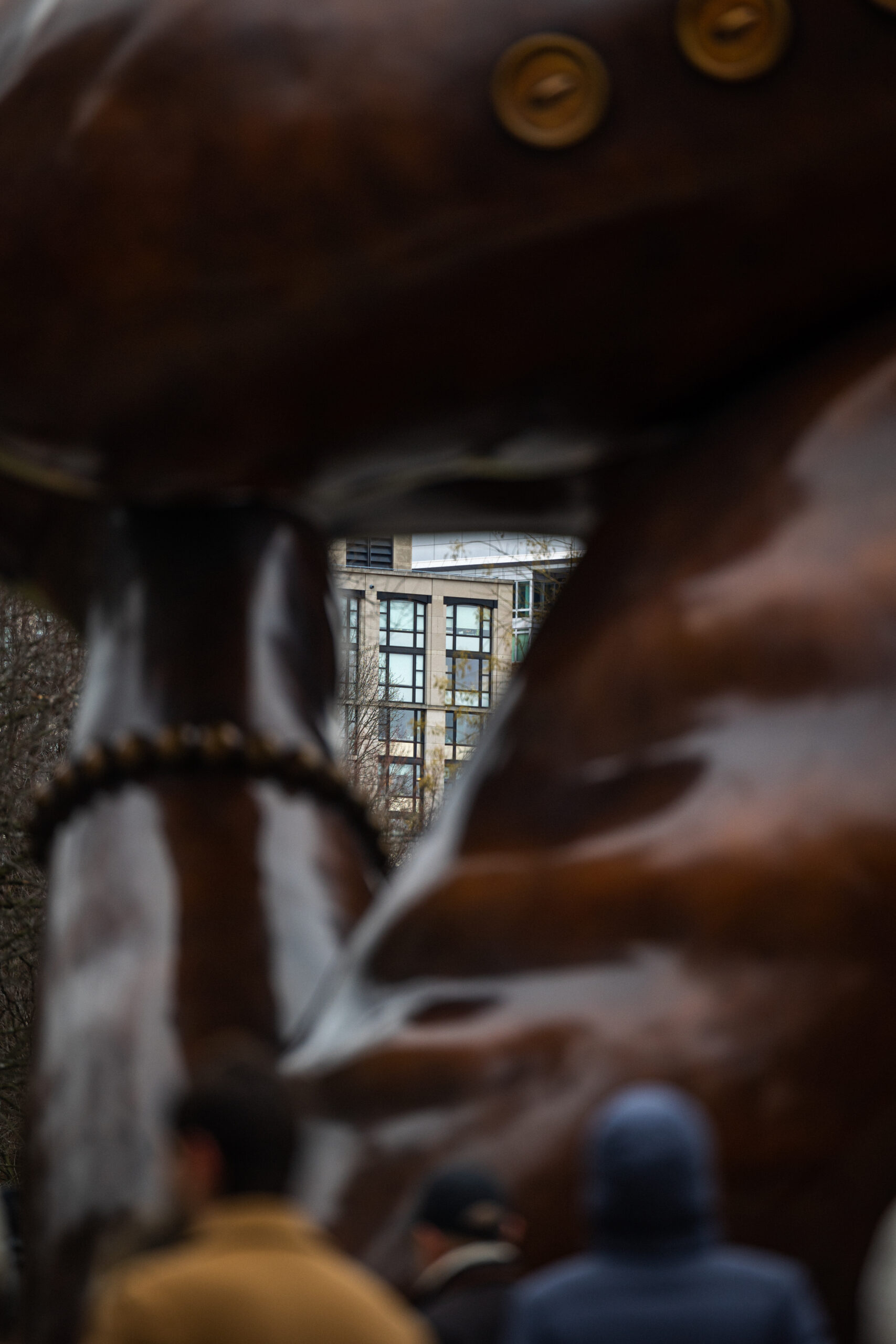
Providing Context of Public Art
Knight said that Boston treats public art spaces from a historical perspective, rather than as living spaces, and that it was important for city to cultivate an updated sense of what public art could be. Historically, much of the city’s public art has been centered around white privilege.
“We’re really stuck on a white guy with a horse,” said Knight. “You walk through the Public Garden and see George Washington, which everyone thinks is Paul Revere because it’s Boston.”
Initially, the project was going to be just about Martin Luther King Jr., but the committee realized the opportunity to make it about both Kings. They met in Boston while they were studying at higher education institutions.
“It’s the content that opens the conversation to talk about racial justice and the Kings’ legacy,” said Knight. “They were both essential in the civil rights movement. And we thought about how many women are not recognized in the Boston art landscape. To have such a prominent work and honor people of color on the Common, it’s not a gesture. It’s powerful. It’s a good entry point that the city needs to address. How do we treat each other? What does equity mean? What does social justice look like? The Embrace Center will let us deliver on that.”
Edwards ’98 Emceed Unveiling Event
For alum Latoyia Edwards ’98, who hosted the unveiling event for NBC-1O Boston on January 13, the creation of “The Embrace” meant a lot more to her than just public art honoring the Kings.
“…as a woman, who was an Emerson College student with her dorm right over there through those trees, and looked out over the Boston Common could not have imagined this,” said Edwards, while pointing at Emerson’s campus.
Through tears and adulation, she spoke about growing up in public housing in Dorchester only miles away from Boston Common. As a child, she visited the Common on field trips or Easter family gatherings, but the Common still felt a world away.
“We looked for ourselves, but we didn’t always find ourselves,” said Edwards.
Edwards said she was humbled and emotional to emcee the event, and felt like she was standing on the shoulders of the many people of color in Boston, like her mom, who was a kid during desegregation and got pelted with rocks as she entered high school.
“…you should be proud of a new day, a new conversation, and a new face for Boston,” said Edwards.
Categories